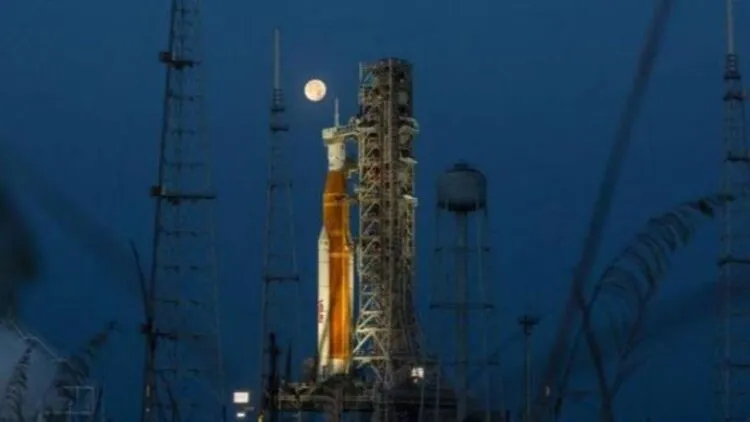Photograph of a rocket (Social Media)
The world is anticipating NASA’s launch of the largest and most powerful rocket ever built to the moon on Monday evening, for the first time in 53 years. The rocket will launch from the same platform from Florida’s Kennedy Space Center.
NASA Administrator Bill Nelson stated, “We will launch the world’s only spaceship intended to send humans into deep space on top of the most powerful rocket.”
This voyage is the first test for NASA’s Artemis programme, which aims to return humans to the moon and fly to Mars.
The 42-day voyage will not only test the new rocket and capsule, but also a new orbit and travel far beyond the vessel capable of delivering a crew beyond the moon.
Specifications for the Big Rocket:
The Space Launch System rocket is taller and more powerful than the Saturn V rocket used to launch the Apollo missions.
Its four engines can simultaneously launch 27 metric tonnes into orbit behind the moon.
It will travel at 32 times the speed of sound as it blasts off into space.
The spaceship is made up of three parts:
Crew Section: Can house four astronauts without docking for up to 21 days.
The European Space Agency built the service module, which houses all of the capsule’s life support systems as well as solar panels and power units.
Launch safety system: A crew safety device attached to a space capsule that may be utilised in an emergency to swiftly detach the capsule from the launch vehicle.
Problems that may arise throughout the trip:
The initial obstacle of the mission, and the first two critical minutes, are when the rocket lifts off into the air, consuming 1,360 tonnes of liquid hydrogen and oxygen as it approaches the greatest pressure point known as Max Q.
The missile will detach its fuel tanks in 8 minutes, when it is at a height of 160 kilometres above the Earth.
The upper portion of the rocket and Orion capsule cruise the ground for roughly two hours, during which time the capsule’s solar panels open.
With the launch of ten satellites, the rocket and capsule will separate, and the stage of pushing the capsule towards the moon will begin.
.
These are the parameters of NASA’s biggest rocket, which will be launched today.

